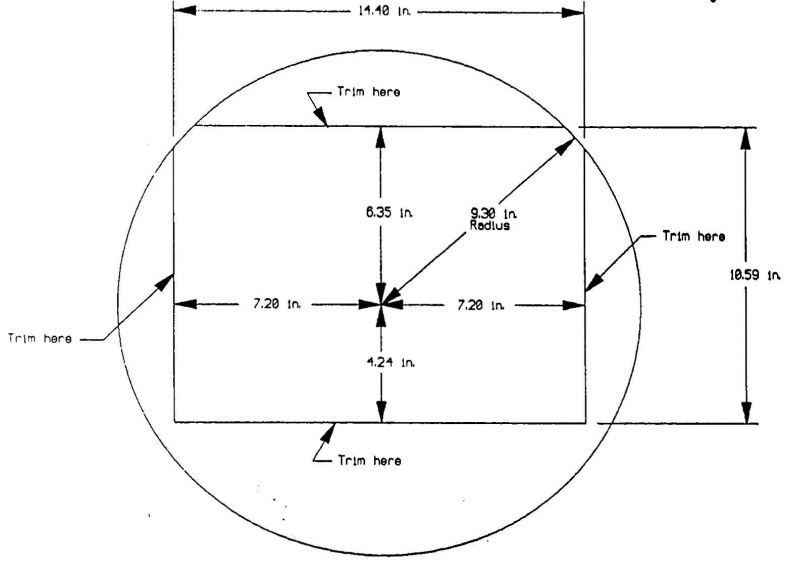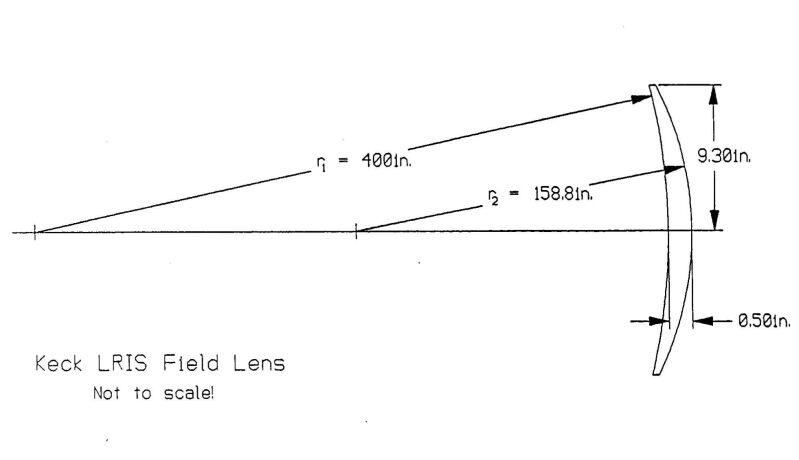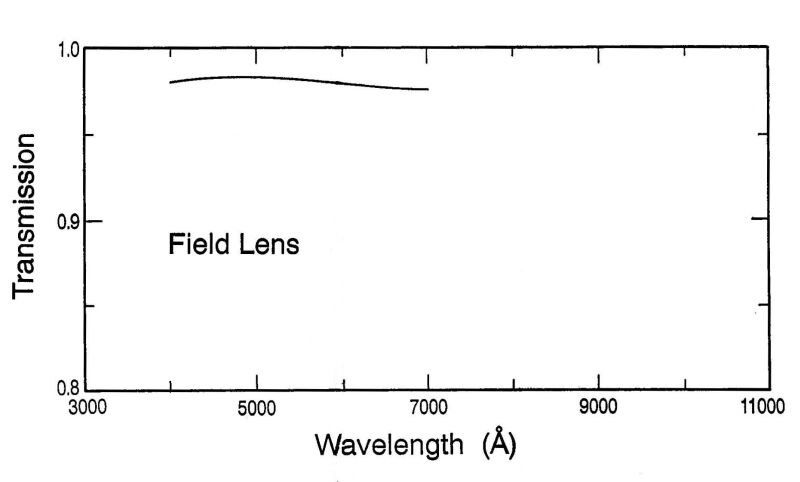Field Lens
Since the Cassegrain telescope optics create a pupil near the telescope
secondary, the spectrograph collimator makes a pupil which is 2760 mm
from the collimator or 760 mm beyond the collimator infinite focus,
which is a very awkward position, well outside the desired outer
envelope of the spectrograph. The solution was to place a field lens 100
mm inside the focal plane of the spectrograph. This low powered meniscus
lens moves the pupil close to the focus of the collimator and to a
location which is suitable for the red gratings and the blue grisms. The
field lens, being close to the large entrance aperture, also provides a
mean to keep dust out of the instrument.



Location
The first surface (telescope side) of the lens is located at z=+100 mm as measured along the optical axis. The lens is fabricated out of a fused quartz blank which has a diameter of 469.9 mm(18.50 inches). The first surface has a radius of curvature of -10243 mm (-403.26 inches) and the second -4036 mm (-158.9 inches). The focal length is 14262 mm (561.5 inches). The thickness at the edge is slightly variable but near 10.0 mm (0.395 inches). The lens is rectangular with two cut off corners (see Figure 1 and 2).Figure 1: The LRIS field lens is cut from a symmetrical lens with a radius of 9.30 inches. The nearly inscribed rectangle shows the cut out lens. Note that two corners are slightly cut.

Figure 2: The shape of the field lens is described in this figure wich is not to scale. The lens is almost flat since the radii of curvature are very long.

Coating
The lens has a MgF2 coating with characteristics shown in Figure 3. The coating range goes from 320 to 1000 nm and it is optimized for 500nm. It was coated by Reynard Enterprises Inc. California.Figure 3: Transmission of the field lens

Send questions or comments to:LRIS Support